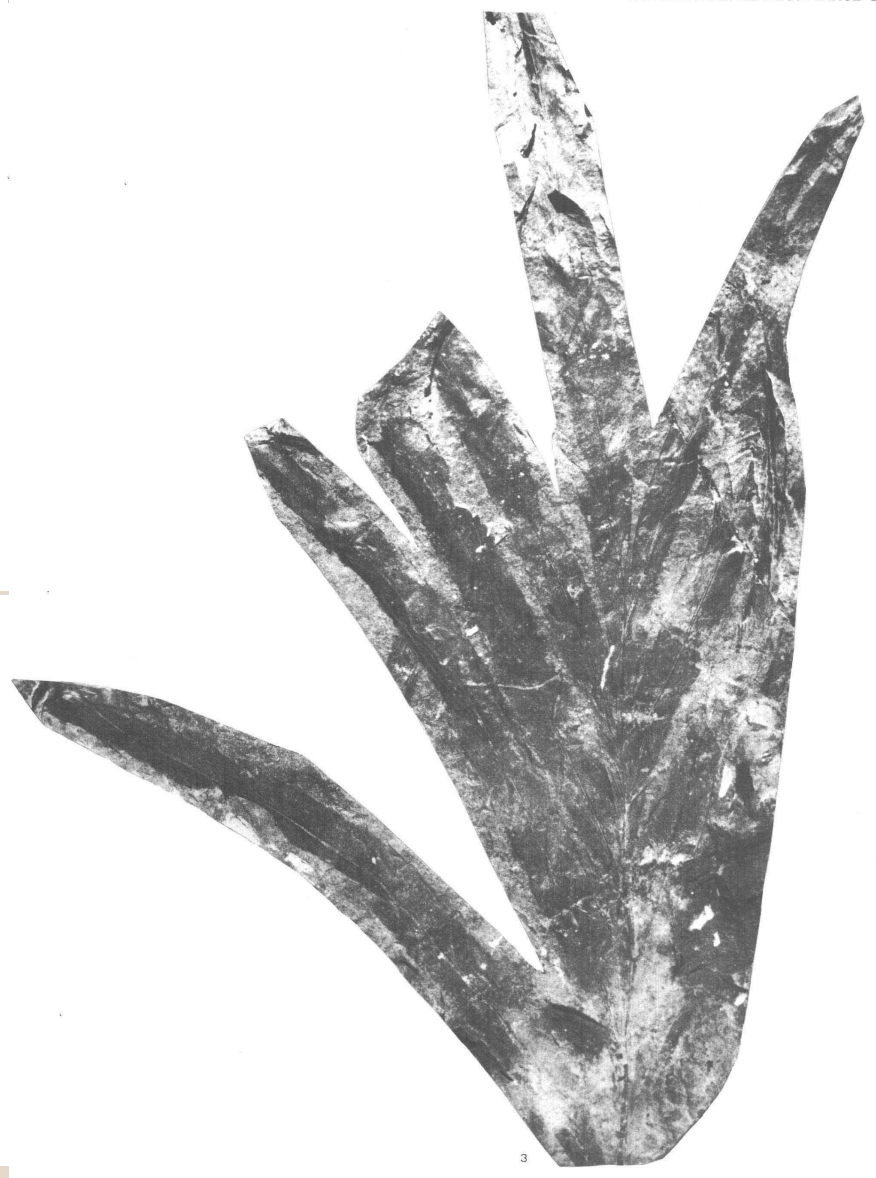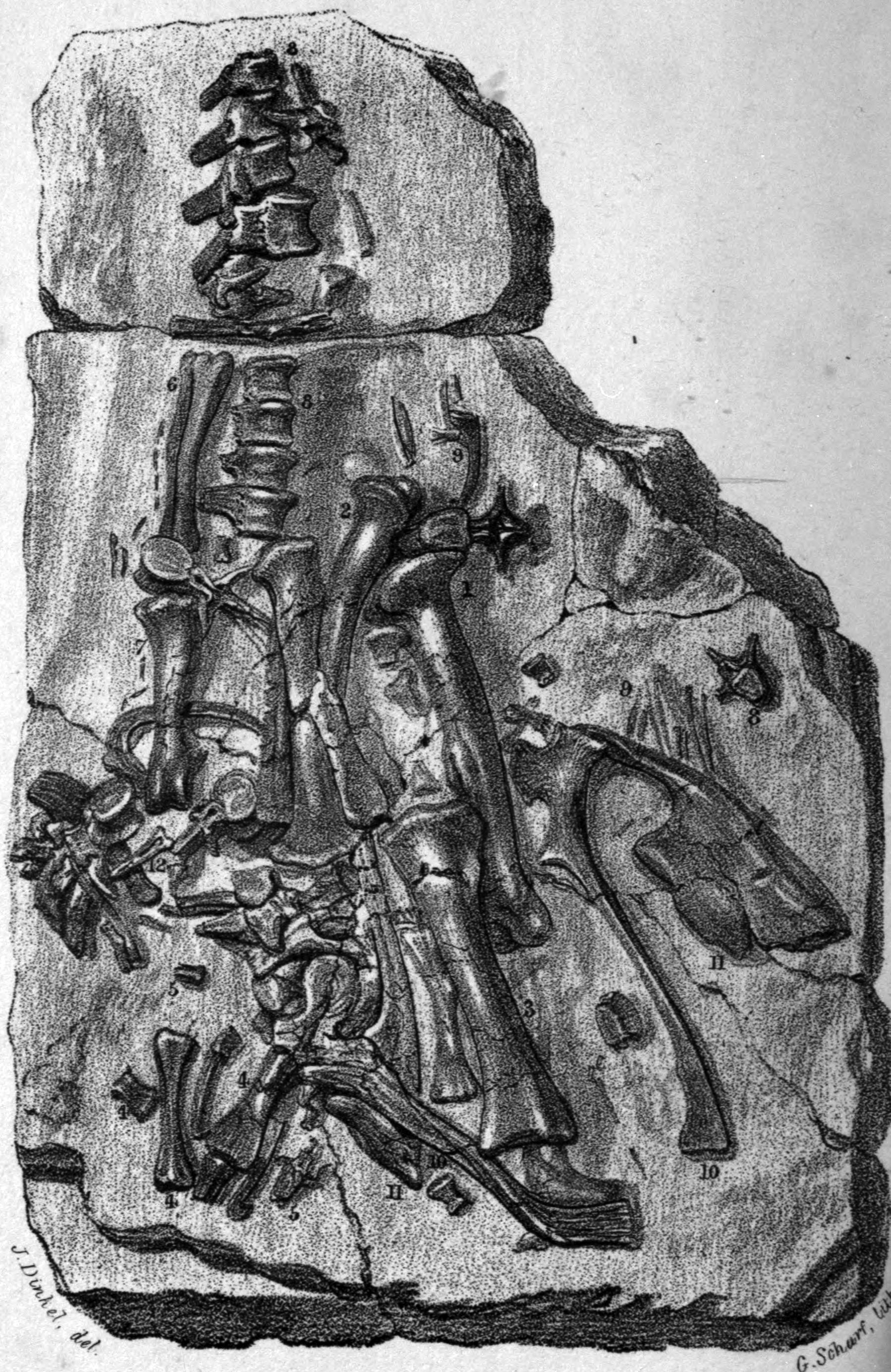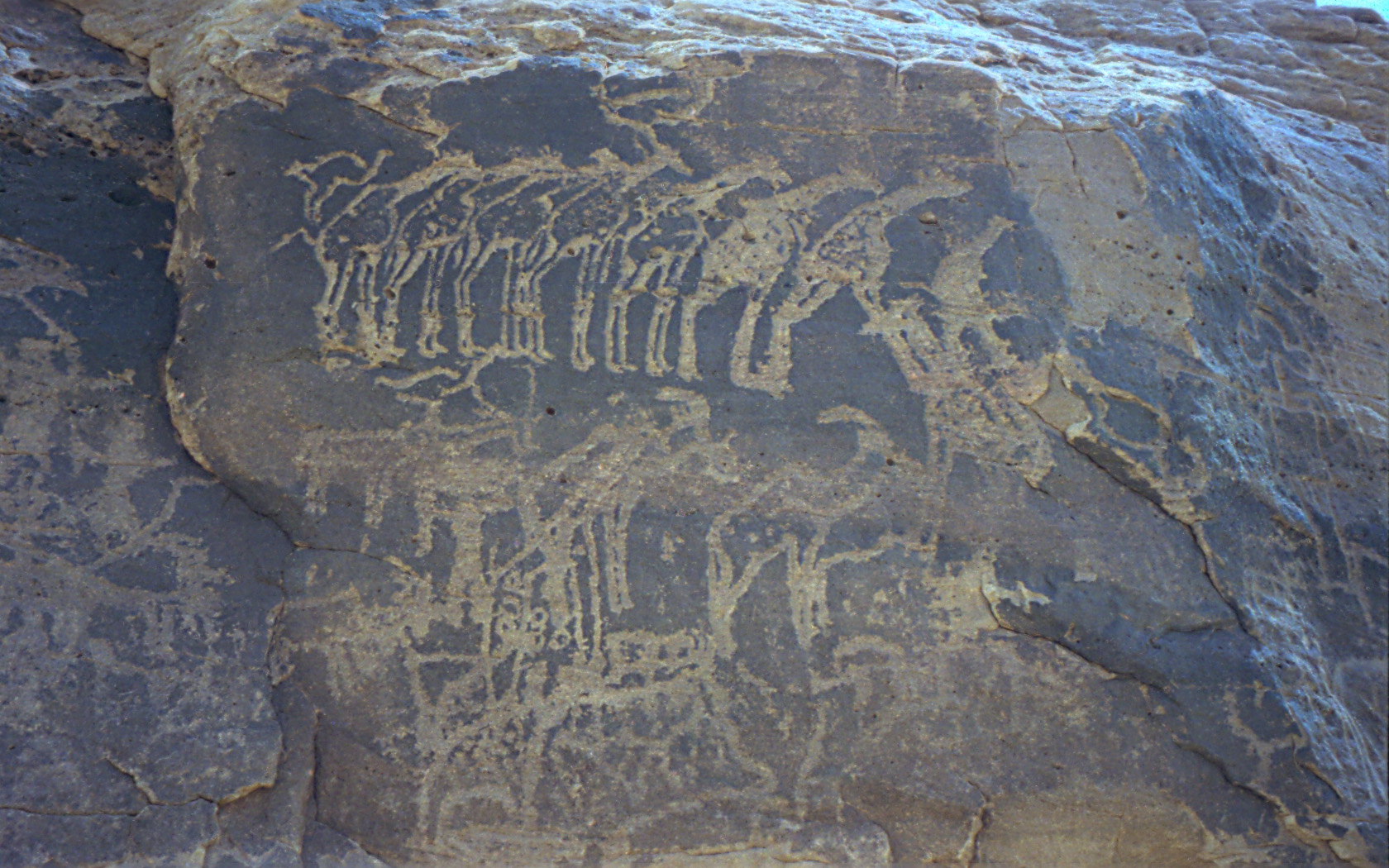|
Valdosaurus
''Valdosaurus'' ("Weald Lizard") is a genus of bipedal herbivorous iguanodont ornithopod dinosaur found on the Isle of Wight and elsewhere in England, and possibly also Spain and Romania. It lived during the Early Cretaceous. Discovery and naming In the nineteenth century Reverend William Darwin Fox collected two small thighbones near Cowleaze Chine on the southwest coast of the Isle of Wight. In 1868 he incorrectly suggested these may have come from the same individual that had in 1848 been uncovered for Gideon Mantell as a fossil of ''Iguanodon'', and which in 1869 would be named as the new genus ''Hypsilophodon''. Regardless, both femora, made part of the collection of the British Museum of Natural History as specimens BMNH R184 and BMNH R185, would be commonly referred to the latter genus. However, in 1975 Peter Galton named them as a new species of ''Dryosaurus'': ''Dryosaurus canaliculatus''. The specific name means "with a small channel" in Latin, referring to ... [...More Info...] [...Related Items...] OR: [Wikipedia] [Google] [Baidu] |
Elrhazosaurus
''Elrhazosaurus'' (meaning " Elrhaz lizard") is a genus of basal iguanodontian dinosaur, known from isolated bones found in Early Cretaceous rocks of Niger. These bones were initially thought to belong to a species of the related dryosaurid ''Valdosaurus'', but have since been reclassified. Discovery and history ''Elrhazosaurus'' is based on MNHN GDF 332, a left thigh bone collected by Philippe Taquet from the upper part of the Elrhaz Formation of Gadoufaoua in the Ténéré Desert, Agadez, Niger. This rock unit dates to the late Aptian stage, approximately 115 million years ago. The bone was designated as the type specimen of a new species of ''Valdosaurus'' (''V. nigeriensis'') by Peter Galton and Taquet in 1982. It was differentiated from the type species ''V. canaliculatus'' by the locations of trochanters and other details. Because ''V. canaliculatus'' is known from Europe, the presence of a related species in central Africa was interpreted as evidenc ... [...More Info...] [...Related Items...] OR: [Wikipedia] [Google] [Baidu] |
Hypsilophodon
''Hypsilophodon'' (; meaning "high-crested tooth") is a neornithischian dinosaur genus from the Early Cretaceous period of England. It has traditionally been considered an early member of the group Ornithopoda, but recent research has put this into question. The first remains of ''Hypsilophodon'' were found in 1849; the type species, ''Hypsilophodon foxii'', was named in 1869. Abundant fossil discoveries were made on the Isle of Wight, giving a good impression of the build of the species. It was a small, agile bipedal animal with an herbivorous or possibly omnivorous diet, measuring long and weighing . It had a pointed head equipped with a sharp beak used to bite off plant material, much like modern-day parrots. Some outdated studies have given rise to a number of misconceptions about ''Hypsilophodon'', including that it was an armoured, arboreal animal, and that it could be found in areas outside of the Isle of Wight. However, research from the following years has shown thes ... [...More Info...] [...Related Items...] OR: [Wikipedia] [Google] [Baidu] |
1977 In Paleontology
Plants Ferns Conifers Angiosperms Invertebrates Mollusks Conodonts Fish Archosauriformes Non-avian dinosaurs Data courtesy of George Olshevsky's dinosaur genera list. Birds Pterodactyls Expeditions, field work, and fossil discoveries * Trexler found hadrosaur remains west of Choteau, Montana in strata of the Two Medicine Formation The Two Medicine Formation is a geological formation, or rock body, in northwestern Montana and southern Alberta that was deposited between 82.4 Ma and 74.4 Ma, during Campanian (Late Cretaceous) time. It crops out to the east of the Rocky Mountai .... Popular culture Literature * ''The Year of the Dinosaur'' Edwin H. Colbert and illustrated by his wife, Margaret was published. This story describes a year in the life of a " brontosaur" and was an attempt to educate the reader about prehistory through a fictional portrayal of it. References {{Reflist, refs= {{cite book, last=Sarjeant , first=W. A. S. , year=2001 , chapter=Di ... [...More Info...] [...Related Items...] OR: [Wikipedia] [Google] [Baidu] |
Iguanodon
''Iguanodon'' ( ; meaning 'iguana-tooth'), named in 1825, is a genus of iguanodontian dinosaur. While many species found worldwide have been classified in the genus ''Iguanodon'', dating from the Late Jurassic to Early Cretaceous, Taxonomy (biology), taxonomic revision in the early 21st century has defined ''Iguanodon'' to be based on one well-substantiated species: ''I. bernissartensis'', which lived during the Barremian to early Aptian ages of the Early Cretaceous in Belgium, Germany, England, and Spain, between about 126 and 122 million years ago. ''Iguanodon'' was a large, bulky herbivory, herbivore, measuring up to in length and in body mass. Distinctive features include large thumb spikes, which were possibly used for defense against predation, predators, combined with long prehensile fifth fingers able to forage for food. The genus was named in 1825 by English geologist Gideon Mantell, based on fossil specimens found in England and was given the species name ''I. ... [...More Info...] [...Related Items...] OR: [Wikipedia] [Google] [Baidu] |
Dryosaurus
''Dryosaurus'' ( , meaning 'tree lizard', Greek ' () meaning 'tree, oak' and () meaning 'lizard', (the name reflects the forested habitat, not a vague oak-leaf shape of its cheek teeth as is sometimes assumed) is a genus of an ornithopod dinosaur that lived in the Late Jurassic period. It was an iguanodont (formerly classified as a hypsilophodont). Fossils have been found in the western United States and were first discovered in the late 19th century. '' Valdosaurus canaliculatus'' and '' Dysalotosaurus lettowvorbecki'' were both formerly considered to represent species of ''Dryosaurus''. Description Based on known specimens, ''Dryosaurus'' has been estimated to have reached up to long and to have weighed up to . However, as no known adult specimens of the genus have been found, the adult size remains unknown. In 2018, the largest specimen (CM 1949) was concluded to be from another species; revising the identity of this specimen put the previous research on size and growth i ... [...More Info...] [...Related Items...] OR: [Wikipedia] [Google] [Baidu] |
Peter Galton
Peter Malcolm Galton (born 14 March 1942 in London) is a British vertebrate paleontologist who has to date written or co-written about 190 papers in scientific journals or chapters in paleontology textbooks, especially on ornithischian and prosauropod dinosaurs. With Robert Bakker in a joint article published in ''Nature'' in 1974, he argued that dinosaurs constitute a natural monophyletic group, in contrast to the prevailing view that considered them polyphyletic and consisting of two different unrelated orders Order, ORDER or Orders may refer to: * A socio-political or established or existing order, e.g. World order, Ancien Regime, Pax Britannica * Categorization, the process in which ideas and objects are recognized, differentiated, and understood * H ..., thus initiating a revolution in dinosaur studies and contributing to the revival of the popularity of dinosaurs in the field of paleontology. Publications * * * Galton, P.M., 1974, "The ornithischian dinosaur ''Hypsiloph ... [...More Info...] [...Related Items...] OR: [Wikipedia] [Google] [Baidu] |
Niger
Niger, officially the Republic of the Niger, is a landlocked country in West Africa. It is a unitary state Geography of Niger#Political geography, bordered by Libya to the Libya–Niger border, north-east, Chad to the Chad–Niger border, east, Nigeria to the Niger–Nigeria border, south, Benin and Burkina Faso to the Benin-Niger border, south-west, Mali to the Mali–Niger border, west, and Algeria to the Algeria–Niger border, north-west. It covers a land area of almost , making it the largest landlocked country in West Africa and the second-largest landlocked nation in Africa behind Chad. Over 80% of its land area lies in the Sahara. Its Islam in Niger, predominantly Muslim population of about million lives mostly in clusters in the south and west of the country. The capital Niamey is located in Niger's south-west corner along the namesake Niger River. Following the spread of Islam to the region, Niger was on the fringes of some states, including the Kanem–Bornu Empire ... [...More Info...] [...Related Items...] OR: [Wikipedia] [Google] [Baidu] |
Philippe Taquet
Philippe Taquet (born 25 April 1940 Saint-Quentin, Aisne) is a French paleontologist who specializes in dinosaur systematics of finds primarily in northern Africa. He is a member of the French Academy of Sciences since 30 November 2004, president since 2012. He has studied and described a number of new dinosaur species from Africa, especially from the Aptian site of Gadoufaoua in Niger (such as '' Ouranosaurus''). He also researches the Lower Cretaceous stratigraphic relationship between western Africa and Brazil by reconstructing the paleobiology from fossil floras and faunas. He was president of the French National Museum of Natural History from 1985 to 1990. He received the Sue Tyler Friedman Medal in 2009 for work in the history of geology The history of geology is concerned with the development of the natural science of geology. Geology is the scientific study of the origin, history, and structure of the Earth. Antiquity In the year 540 BC, Xenophanes described fo ... [...More Info...] [...Related Items...] OR: [Wikipedia] [Google] [Baidu] |
Type Species
In International_Code_of_Zoological_Nomenclature, zoological nomenclature, a type species (''species typica'') is the species name with which the name of a genus or subgenus is considered to be permanently taxonomically associated, i.e., the species that contains the biological Type (biology), type wiktionary:en:specimen, specimen (or specimens). Article 67.1 A similar concept is used for suprageneric groups and called a type genus. In botanical nomenclature, these terms have no formal standing under the International Code of Nomenclature for algae, fungi, and plants, code of nomenclature, but are sometimes borrowed from zoological nomenclature. In botany, the type of a genus name is a specimen (or, rarely, an illustration) which is also the type of a species name. The species name with that type can also be referred to as the type of the genus name. Names of genus and family ranks, the various subdivisions of those ranks, and some higher-rank names based on genus names, have suc ... [...More Info...] [...Related Items...] OR: [Wikipedia] [Google] [Baidu] |
Wealden Group
The Wealden Group, occasionally also referred to as the Wealden Supergroup, is a group (stratigraphy), group (a sequence of rock strata) in the lithostratigraphy of southern England. The Wealden group consists of wiktionary:paralic, paralic to continental (freshwater) sedimentary facies, facies sedimentary rocks of Berriasian to Aptian age and thus forms part of the English Lower Cretaceous. It is composed of alternating sands and clays. The sandy units were deposited in a flood plain of braided rivers, the clays mostly in a lagoonal coastal plain.Jackson (2008) The Wealden Group can be found in almost all Early Cretaceous Sedimentary basin, basins of England: its outcrops curve from the Wessex Basin in the south to the Cleveland Basin in the northeast. It is not found in northwest England and Wales, areas which were at the time tectonic highs where no deposition took place. The same is true for the London Platform around London and Essex. Offshore, the Wealden Group can reach a ... [...More Info...] [...Related Items...] OR: [Wikipedia] [Google] [Baidu] |
Condyle (anatomy)
A condyle (; in Merriam-Webster Online Dictionary '. , from ; κόνδυλος knuckle) is the round prominence at the end of a , most often part of a joint – an articulation with another bone. It is one of the markings or features of bones, and can refer to: * On the , in the joint: ** [...More Info...] [...Related Items...] OR: [Wikipedia] [Google] [Baidu] |








